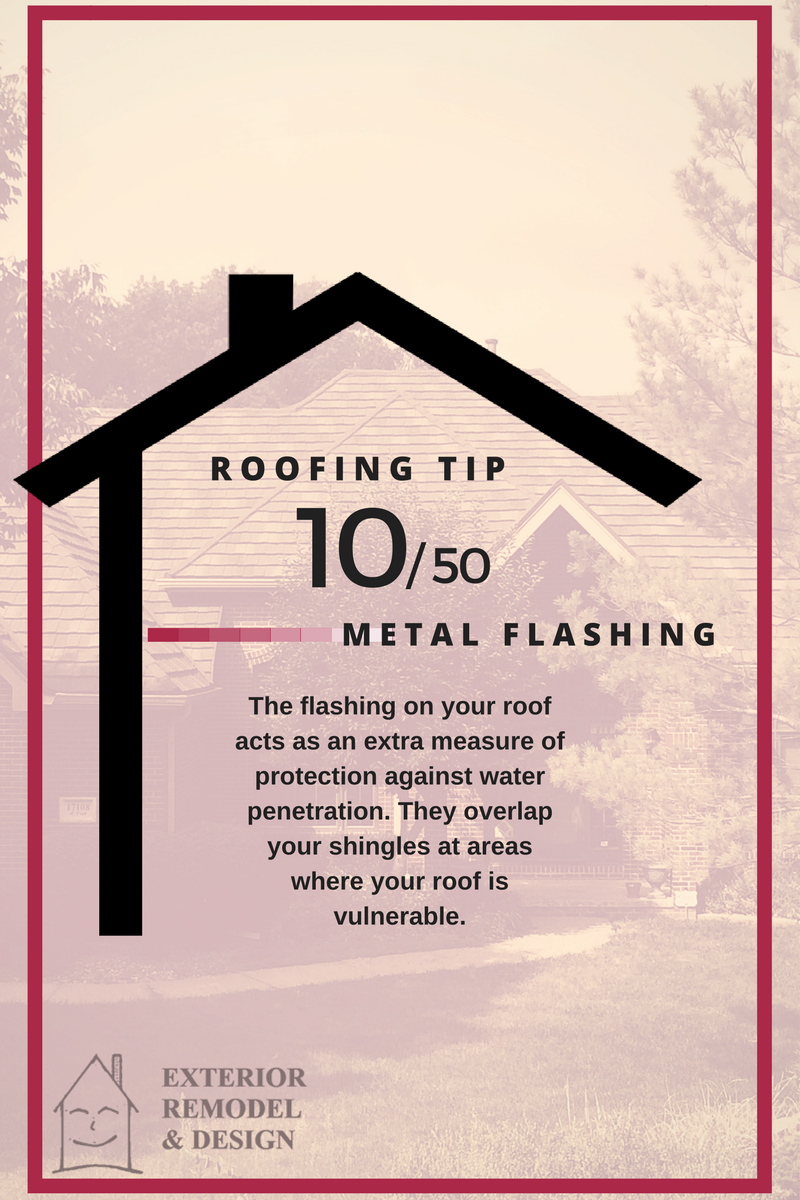Your roof is made up of many different materials, not just the shingles that are the most visible. All of the materials work together to keep your home safe from weather phenomena.
Metal flashing is often the unsung hero of your roof – working overtime to keep the interior of your home protected from water penetration. They are installed at the intersections and terminations of your roof, and must be able to resist penetration associated with gravity, surface tension, and wind pressure.
Common areas where flashing is vital are:
- Chimneys
- Skylights
- Vents
- Roof valleys
- Dormers
- Eaves
- Roof to wall intersections
- Rakes
- Ridges
- Vents
There are many types of metal flashing, which include:
- Copper
- Lead
- Lead-coated copper
- Galvalume ®
- Malleable metals (such as aluminum, zinc, and stainless steel)
The type of flashing used for your roof should be determined by a professional since proper installation is a time-consuming process and requires experience. The incorrect material choice can cause unexpected chemical reactions, such as corrosion. Improper installation can direct water into your home.
Because of the importance of flashing, its failure is often a reason for leaks. Effective flashing will last for years, but environmental factors can accelerate wear. Salt air and acid rain can increase corrosion, meanwhile excessive heat, scouring winds, and heavy snows can warp the flashing.

